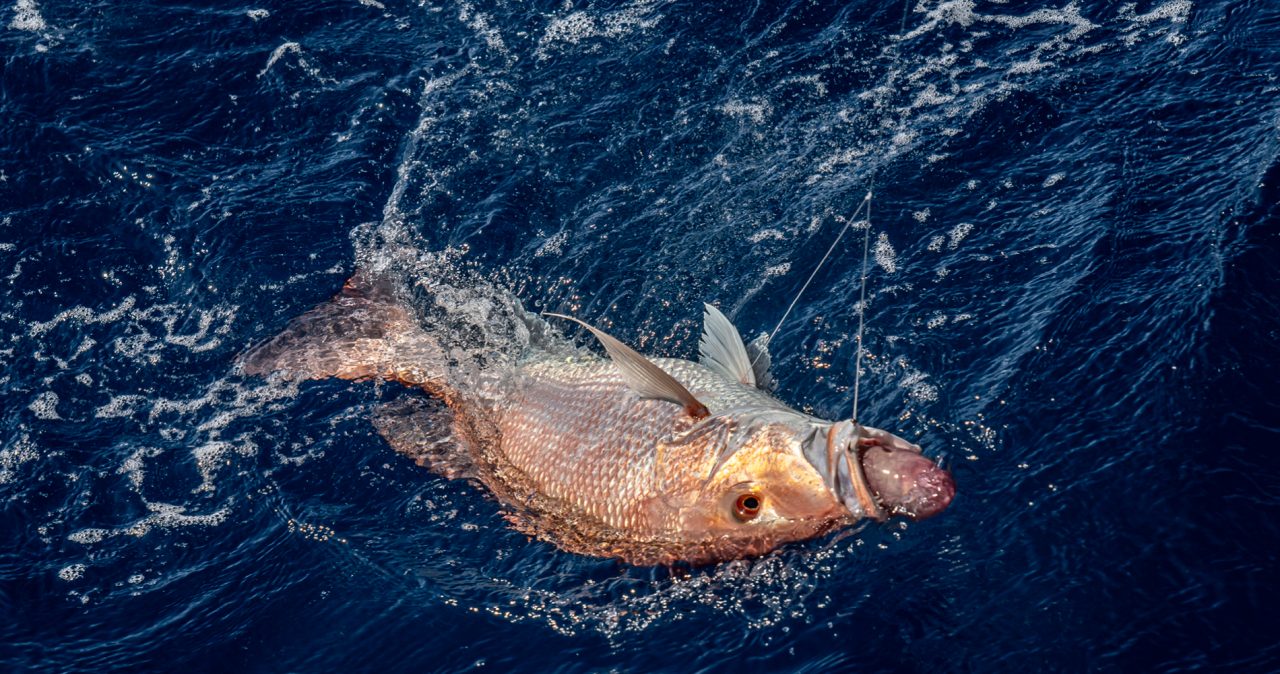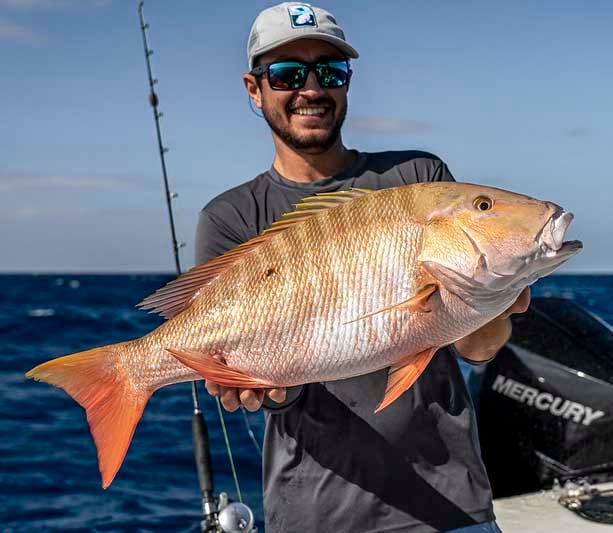Originally featured on The International Game Fish Association website on 11/25/22
by Nick Haddad
Return ‘Em Right Sustainable Fisheries Communications Manager
IGFA All-Tackle Length Records
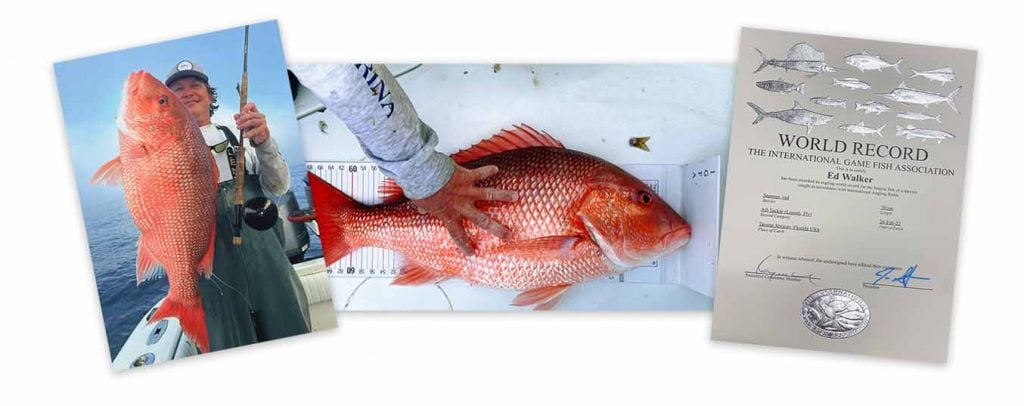
The IGFA established the All-Tackle Length World Record program in 2010 as a conservation-based category that mandates fish be released. With a recent split of the All-Tackle Length records into conventional and fly categories, there are now more opportunities than ever before to claim one of these highly sought-after records. It’s important to note that this category only serves its purpose if fish are released safely to grow, spawn and be caught again. To maximize post release survival, work quickly to measure and document your fish, minimize air exposure and handling, and get your catch back in the water as fast as possible. Although these steps are necessary for all species, certain deep-water species require additional steps to ensure survival.
Barotrauma: What Makes Fish Float
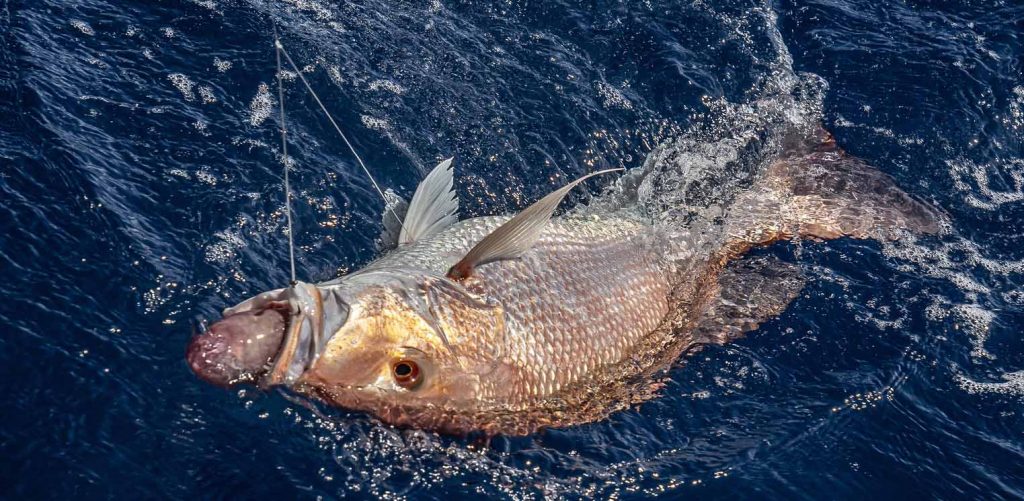
Most avid offshore anglers have experienced the unpleasant sight of a big snapper or grouper floating off after release. Why does this happen? Species that reside in deep water often experience a phenomenon called barotrauma, which quite literally means pressure (baro) – injury (trauma). As fish are reeled up from deep water, typically 15-20 meters (50-60 feet) or greater , the gasses inside their body cavity expand from the change in pressure, displacing their organs and leaving them bloated and unable to return to depth on their own. Anglers often notice the effects of barotrauma when they see the stomach of a fish protruding from its mouth, or when the fish’s stomach feels firm and bloated.
Put ‘Em On Ice or Use a Device
For years anglers have primarily mitigated barotrauma by using venting techniques. Venting involves using a hollow hypodermic needle or tool to release the excess gas in the body cavity of the fish. Although effective when done properly, venting requires knowledge of the anatomy of a fish and precision with the venting tool. As a result, venting can cause further harm if not performed quickly and correctly.
More recently, the use of descending devices has taken off as one of the most effective and easiest methods to mitigate barotrauma. Descending devices are weighted devices that carry fish back down and release them at depth, allowing them to naturally recompress upon descent. They are typically grouped into three categories which include lip grip devices, inverted hooks, and fish elevators (or weighted crates/baskets).
Despite their existence for almost two decades, the phrase “descending device” is still relatively uncommon to most anglers. As the popularity of their use continues to grow, so does the need to remind anglers how to properly use the devices and maximize the chances a fish survives to grow, spawn and fight again.
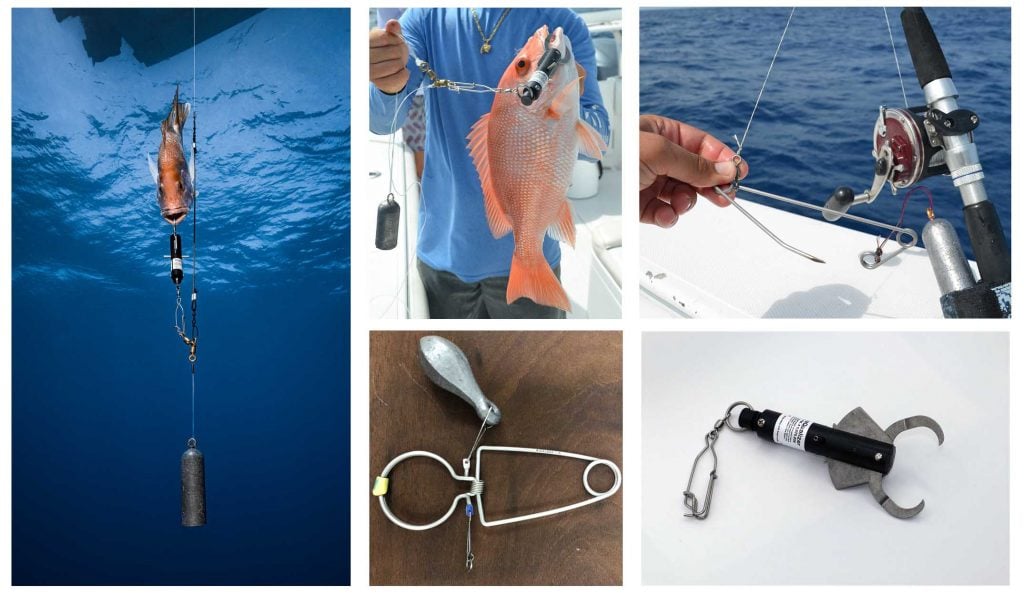
Tips and Tricks for Targeting Your Next All-Tackle Length Record Reef Fish
If you are targeting an IGFA All-Tackle Length World Record, there is a good chance you will be releasing many fish in the process. Having the right system in place on your boat for descending will make a world of difference in your confidence and success in using the gear. Being prepared to release fish before they hit the deck is not only important for the fish, but for the angler, too. The better prepared you are to release fish you can’t keep, the more time you can spend fishing, and the better chance you will have at catching that record fish.
Make descending fish an easy, efficient, and effective part of your fishing experience by following the tips and tricks below:
1) Rig your descending gear before you make your first drop:
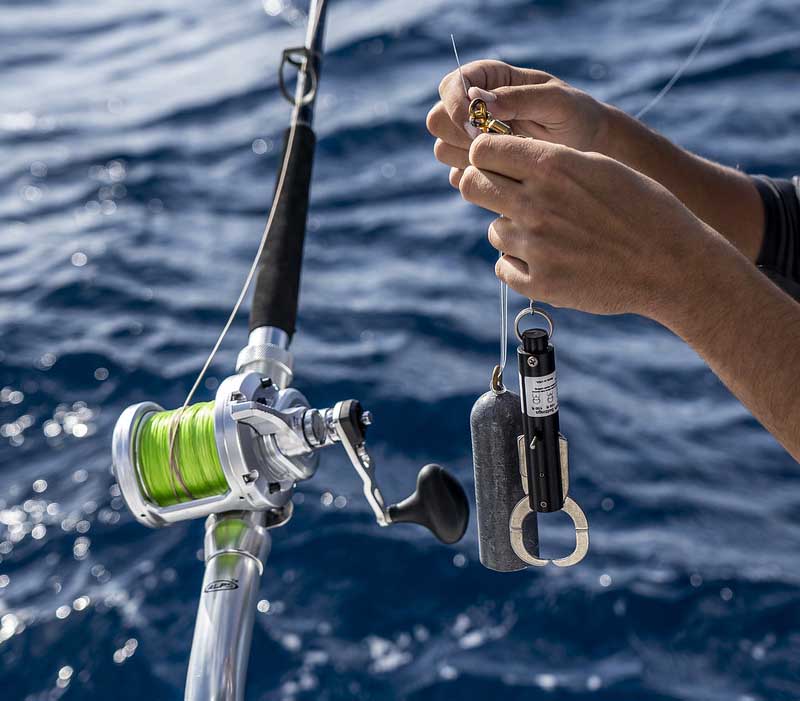
Rigging a descending device and 3-pound weight to a rod and reel before dropping the first bait down.
Descending devices typically require a designated rod/reel for descending. A two-speed reel and a heavy rod make retrieving the weight much more efficient. If you have a spare electric reel setup and ready to go, consider using this to descend fish. Lastly, some anglers will use a shorter kite fishing rod as their designated descending rod as they tend to prefer a smaller, more compact set up.
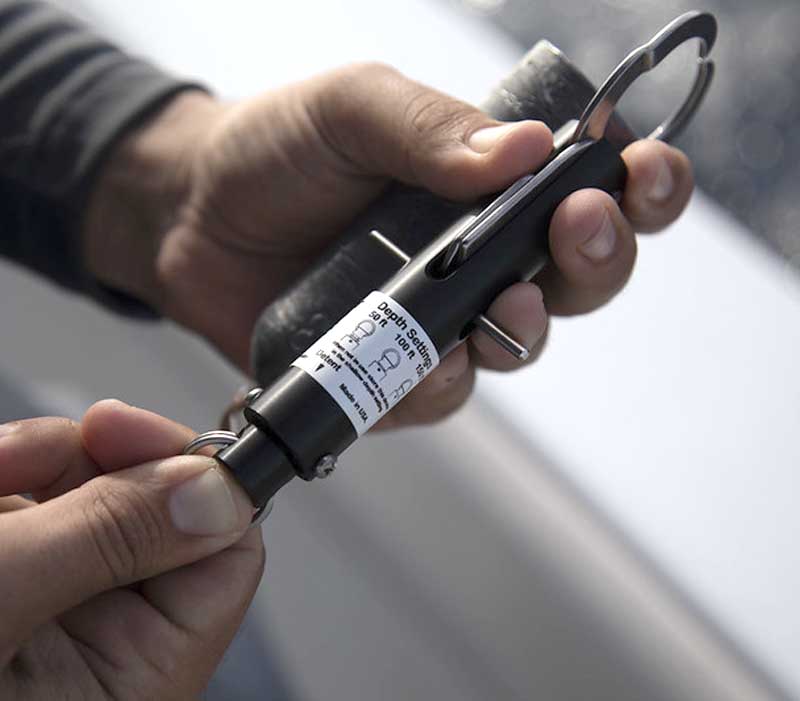
Three depth settings on a standard SeaQualizer. Set the release depth to at least half of the capture depth.
When using a SeaQualizer descending device that releases based on pressure, set your depth accordingly based on your fishing depth. It is recommended to release fish to at least half the capture depth, but it is preferred to release them as close to the bottom as possible to get your catch back into the school or structure you pulled it from. For example, if you are in 120 feet of water, set the release depth to 100 feet before you start fishing.
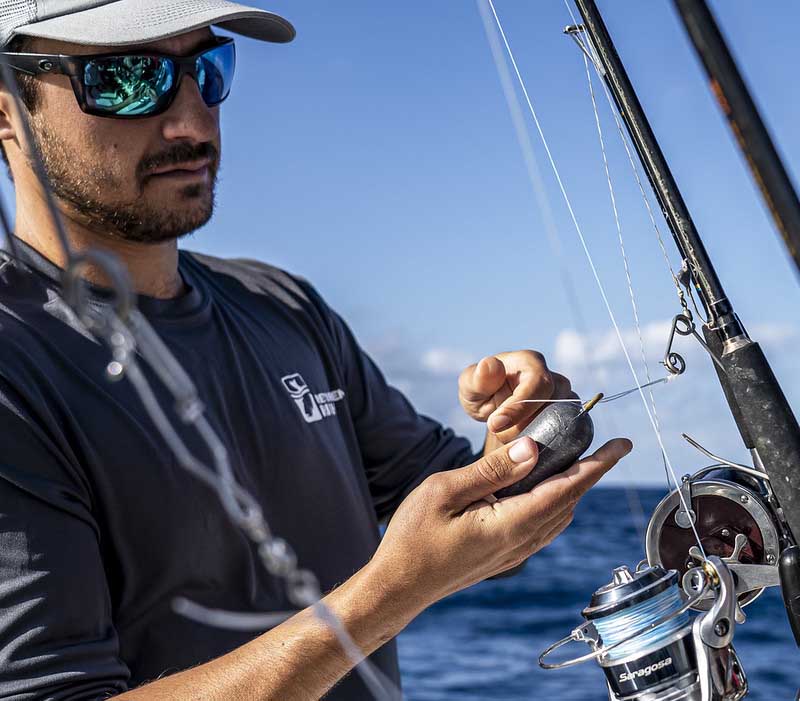
Using a loop knot to attach a heavy weight to a descending device.
Every descending device requires a heavy weight to bring the fish back to depth. Consider rigging the weight on your device with a loop knot or a swivel to make adding/removing weight quick and easy. This also allows you to quickly remove the weight while running between spots, so the lead isn’t bouncing around and causing damage to the boat. I like to start with a three-pound weight, as this will get most fish up to 15 pounds to the bottom without a problem.
2) Position your descending setup for efficient use:
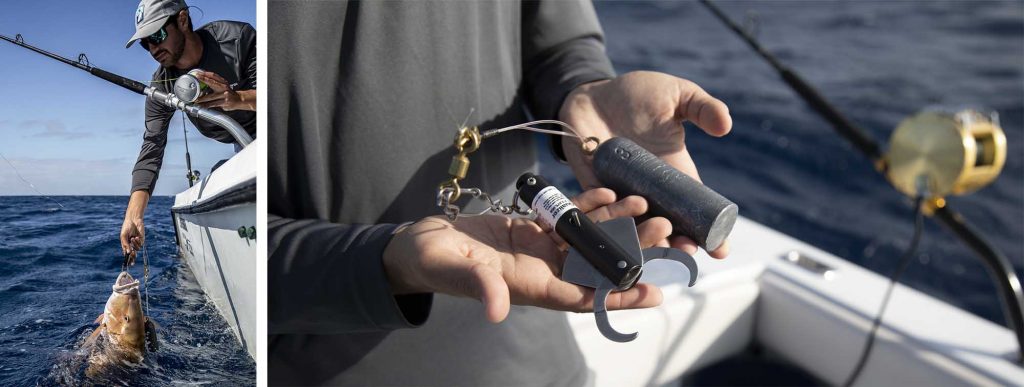
A bent butt rod in a 30–90o rod holder, so the descending gear hangs over the water and is within reach and ready to drop when needed, is the preferred set up. Using a bent-butt rod lets the boat do the work while retrieving the weight from depth instead of fighting the rod and weight back up. This setup allows a single angler to quickly transition a fish to the device and lower it down on their own without needing the help of a mate or an additional angler.
3) Properly attach your descending device to the fish:
Always attach the SeaQualizer or other lip grip device to the bottom jaw of the fish. Most reef fish you catch will have a slightly thicker bottom jaw that will lead to a more secure grip on the fish.

When using an inverted hook style device, use either the same hole the hook made in the fish’s mouth or gently pierce the device through the soft tissue under the lower jaw. Both places will provide the least harm possible to the fish and also securely fasten the device.
4) Don’t get discouraged:
Just like with any new fishing gear, learning how to use your descending device properly takes a little bit of time. The first time descending doesn’t always go smoothly, but after a couple of trips, descending will be a positive part of your fishing experience and you will spend more time catching and less time struggling to release a floating fish.
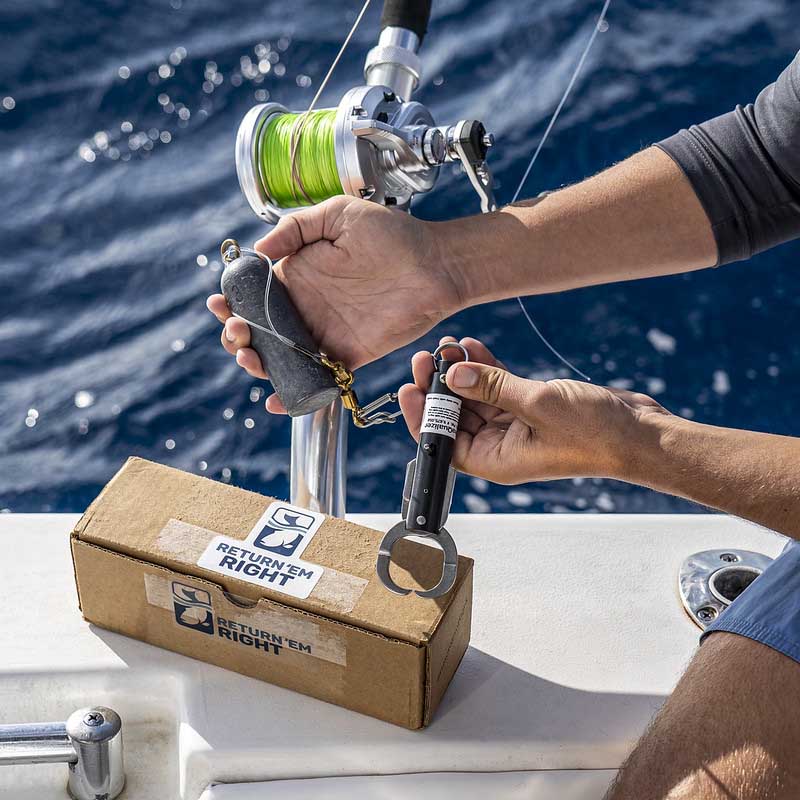
Return ‘Em Right is a new program that is the leading voice for tackling catch and release mortality due to barotrauma in the Gulf of Mexico. Their mission is to improve reef fish survival by equipping anglers with the knowledge and gear to release reef fish confidently and successfully. Offshore anglers can visit returnemright.org to learn about barotrauma and participate in a short 15-minute training on best release practices, including venting and descending. Eligible anglers can also earn free release gear to use out on the water.
_____________________________________________________________________________________________________________________________________________
About the Author
Nick Haddad is the Sustainable Fisheries Communications Manager, Florida Sea Grant & Return ‘Em Right. He holds a BS in Marine Biology from the University of Tampa, MS in Renewable Natural Resources concentrated in Fisheries and Aquaculture Management from Louisiana State University. Formerly IGFA’s Angler Recognition Coordinator, Nick is an avid fisherman with 24 years of experience ranging from fly fishing in small streams in Pennsylvania to bottom fishing in the middle of the Gulf of Mexico and everything in between.

